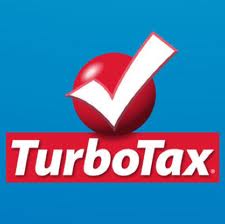Seven Swans a-Swiming!
It’s Day 7 of the 12 Days of Branding. If you missed any of the series thus far, you can find them here. In today’s installment we’ll dive into the Marketing Rule of 7. Never heard of it? Read on!
Let’s start off today with a visualization exercise:
You’re at the mall at Christmas time. Somehow, you mustered up the patience to withstand the terrors of finding a parking spot (you wanted to run over that traffic guard, but it’s the holidays, so you contained it). You’re now inside the mall, making your way toward Macy’s. There’s like a bazillion people in there with you. The noise is astounding. Christmas music is playing. Those salesmen with their carts in the middle of the walkway hawk their wares to no one in particular.
There’s a guy out front of Radio Shack demonstrating the latest remote control helicopter. Robot toys moving in circles, crying babies, teenage girls laughing…there’s so much…well, noise.
How much of this do you actually hear? I mean, can you pick out each individual conversation?
True, you’re definitely aware of a certain overall decibel level. And you may even feel some discomfort with all of it. But you can’t pick out each voice or conversation.
Now, out of the blue, someone calls your name.
Suddenly your attention is on full alert. How did your ears manage to pick that sound out from all the rest? Why didn’t you have a problem hearing that?
It’s because your brain’s got this clever little bit called the Reticular Activating System (RAS), and it helps you cope with all of the trillions of data bombarding your nervous system all day long. It acts like a filter between your conscious and subconscious mind, and keeps out the stuff that you feel is irrelevant. Your RAS also does a bang up job of keeping out those pesky marketing messages you get hit with by the thousands. (Yes, thousands. Shenk, in his book Data Smog, states that “…the average American encountered 560 daily advertising messages in 1971. By 1997 that number had increased to over 3,000 per day.” I wonder what the number is today?)
The Marketing Rule of Seven
It’s an old concept, probably originating to before the advent of cable TV. Simply stated, The Marketing Rule of Seven is a reminder that your prospective buyer needs to hear or see your marketing message at least seven times before they buy from you.
Since the rule was written years ago, today that number is more likely to hover around 77. The important thing in the Rule of Seven is not the number, but its meaning. Your prospect will need to hear and see your marketing message many MANY times before they decide to buy from you. And the RAS is just one of many hurdles you’ve got to clear. Here’s my twist on the Rule of Seven…
Seven Hurdles to Your Marketing
#1 – Awareness: We’ve pretty much covered this one already, but it bears repeating. Your prospects need to first know you exist. And just putting your brand message out there once, isn’t enough to break through their subconscious.
#2 – Need: Your prospect may not actually need what you’re offering right now. That’s okay. Until then, you’ll be working on jumping the Awareness hurdle.
#3 – Like/Trust: Okay, your prospect now knows you exist and that you might have something that fixes their big problem. But they still aren’t sure if they can actually trust you. That’s because there are so many marketing messages out there that simply aren’t true. You and I both know you’re not like that, but your prospect doesn’t. You’ll need to prove you’re trustworthy, first. This is where all of your efforts to build a solid relationship kick in. Once you earn her trust, your prospect can move onto the next stage.
NOTE: Your prospect also needs to trust themselves. As in, Do I have enough time/energy/etc to take full advantage of this offer?
#4 – Price: Your prospect may be a little worried about the price. That’s okay. When you show how much value you offer, this hurdle will fall away.
#5 – Time: Now that your prospect knows, likes and trusts you, and she knows what you offer is a great value, she may need to do a little planning to work your fee into her budget. The higher your price, the longer this will take. For most people, if what you’re selling is more than $50, it’s not considered an impulse buy. Be prepared to wait a bit, but keep nurturing that relationship.
#6 – Choices: Depending on how much competition you’ve got, or even how many different options you’re offering (yes, you can compete with yourself!), your prospect might be having a hard time choosing the perfect vendor.
#7 – Memory: Your prospect (like you) is a very busy person. Their To Do list is a mile long. So while they might have every intention of buying your thing, they might actually…um, forget.
When you look at this list, it’s amazing that commerce even happens at all.
The point here is not to be disheartened. But to be enlightened. If you know that decent response levels to any sort of marketing hover around 1 to 2%; AND you understand all of these hurdles to purchasing, you’ll be better equipped to develop a marketing strategy that can go the distance.
Your branding and marketing efforts need to be repetitive and consistent. You cannot just run an ad one time and expect anyone to buy from you. You’ve got to put together an integrated approach (e.g. use multiple methods that work together) so that your prospect hears and sees your brand and message many many times. One of the best integrated campaigns I ever experienced was an end-of-year push by Intuit’s TurboTax in December of 2010.
How Intuit Markets their TurboTax Product
 Most people would agree that there’s not much sex appeal around doing your taxes. So how do you get a product like that to stick out in your prospect’s mind? Come at them from every direction. In the space of one week, I remember seeing or hearing TurboTax marketing in these forms:
Most people would agree that there’s not much sex appeal around doing your taxes. So how do you get a product like that to stick out in your prospect’s mind? Come at them from every direction. In the space of one week, I remember seeing or hearing TurboTax marketing in these forms:
- An email message (I had used TurboTax the year before, so they had me in their database).
- Radio messages on the way to and from work.
- TV commercials.
- Google ads.
- Facebook ads.
- Banner ads on other websites.
- A direct mail piece.
And that was just in one week. Intuit definitely markets beyond one week with integrated campaigns year round. This particular effort on their part stuck out to me because:
- The message was exactly the same every time.
- The message came at me from every direction.
- The offer (a discount for buying early) was the same.
- The logo was displayed prominently and consistently.
You and I may not have Intuit’s marketing budget, but we can certainly apply their tactics on a scale that works for us. I’ll say it again in case your RAS filtered it out: Your branding and marketing efforts need to be repetitive and consistent. (And if you can, use your prospect’s name!) What tactics do you use to get your marketing out consistently? Share a tip in the comments below!
Photo Credit: rvacapinta











Thanks for sharing! I’ve had several people ‘forget’ on me. I just dropped them a line & free sample as a gentle ‘reminder.’ 🙂
This is an interesting read. I’ve heard of needing to get your message out there 9 times or 13 times. I wonder whether this applies to content marketing – i.e. if you create something valuable to people, say an ebook do you still have to bombard them 10 or 15 times before you are likely to get a sale?It’s a bit scary to think that most forms of advertising won’t work (in isolation) and I think a lot of businesses still have the mindset that they can just pay for some flyers or set up a yellow pages ad and they are done.